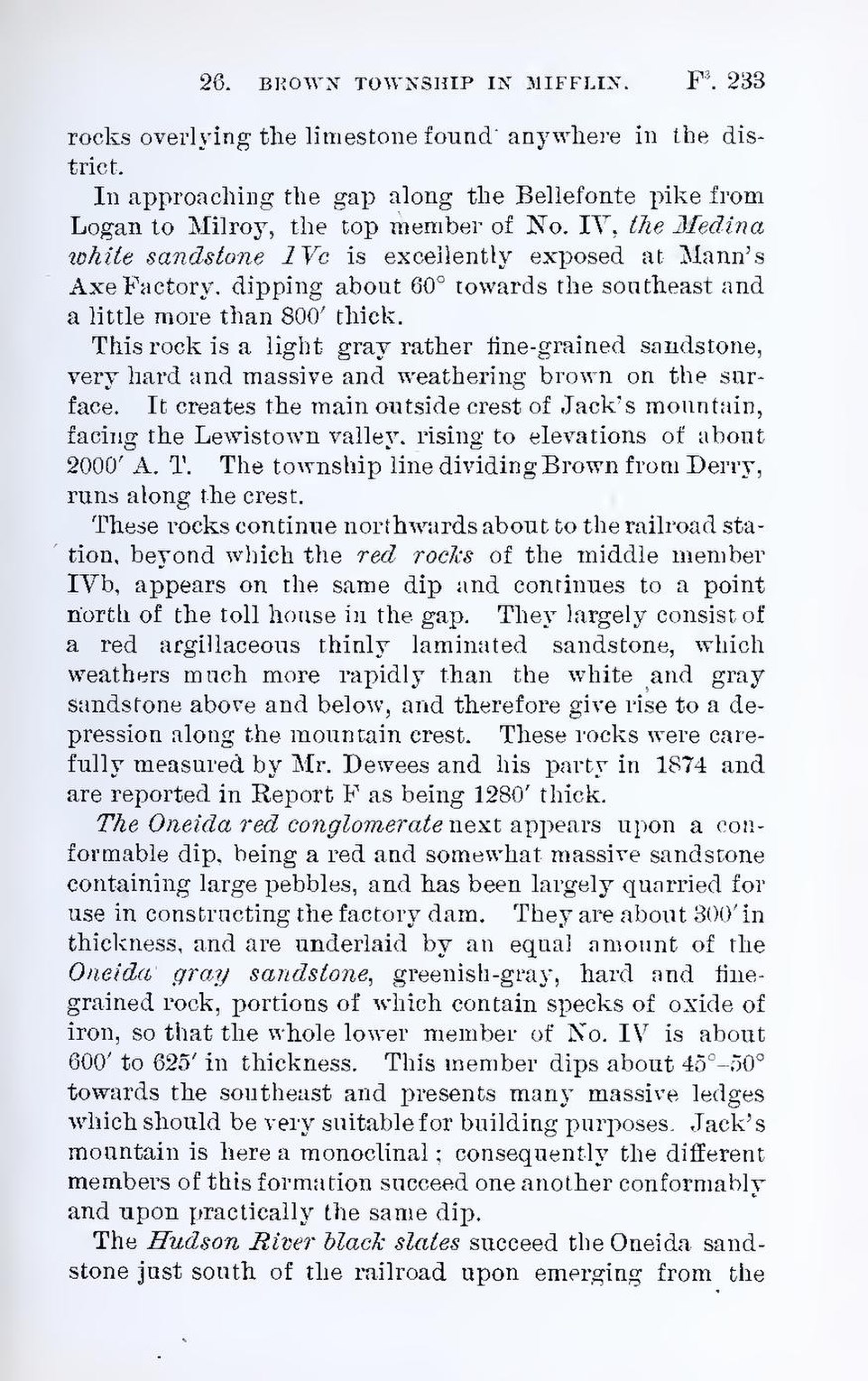rocks overlying the limestone found anywhere in the district.
In approaching the gap along the Bellefonte pike from Logan to Milroy, the top member of No. IV, the Medina white sandstone IVc is excellently exposed at Mann’s Axe Factory, dipping about 60° towards the southeast and a little more than 800′ thick.
This rock is a light gray rather fine-grained sandstone, very hard and massive and weathering brown on the surface. It creates the main outside crest of Jack’s mountain, facing the Lewistown valley. rising to elevations of about 2000′ A. T. The township line dividing Brown from Derry, runs along the crest.
These rocks continue northwards about to the railroad station, beyond which the red rocks of the middle member IVb, appears on the same dip and continues to a point north of the toll house in the gap. They largely consist of a red argillaceous thinly laminated sandstone, which weathers much more rapidly than the white and gray sandstone above and below, and therefore give rise to a depression along the mountain crest. These rocks were carefully measured by Mr. Dewees and his party in 1874 and are reported in Report F as being 1280′ thick.
The Oneida red conglomerate next appears upon a conformable dip, being a red and somewhat massive sandstone containing large pebbles, and has been largely quarried for use in constructing the factory dam. They are about 300′ in thickness, and are underlaid by an equal amount of the Oneida gray sandstone, greenish-gray, hard and fine-grained rock, portions of which contain specks of oxide of iron, so that the whole lower member of No. IV is about 600′ to 625′ in thickness. This member dips about 45°—50° towards the southeast and presents many massive ledges which should be very suitable for building purposes. Jack’s mountain is here a monoclinal; consequently the different members of this formation succeed one another conformably and upon practically the same dip.
The Hudson River black slates succeed the Oneida sandstone just south of the railroad upon emerging from the
